2018.12.04 Tuesday Stretch

BugDoc Dave here with my Stretch Tuesday discussion. Of course, to an Ohio State fan, “Going Blue” is a fighting phrase! But, since we’re talking glass, I’ll ignore the North of Ohio implications! LOL! Actually, this will be a difficult topic because blue is one of the favorite stretch colors, and stretch manufacturers made lots of pieces in this color. Because of this, I thought I should limit my presentation to the shades of blue! Most folks think the only blue found in stretch is the one most people call Celeste Blue. Celeste Blue is simply the name that Fenton used to describe their blue stretch that was placed in their Florentine Line (their trade name for stretch glass).
To my eye, Celeste Blue is a nice transparent blue color that isn’t too light nor too dark. However, with that said, even Fenton pieces of Celeste Blue can vary a bit. I’ve selected a Fenton #660 bowl and 8.5-inch tall #449 candle holders with cut oval decoration as a good example of this color.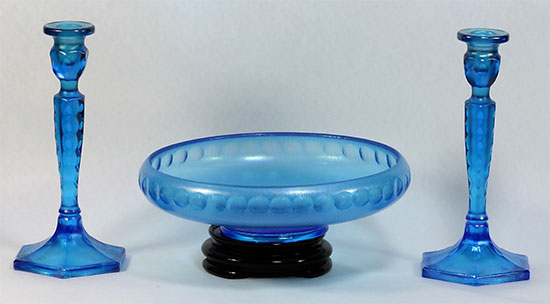
However, here’s a half pound candy jar (#8) that is in a light version of Celeste Blue: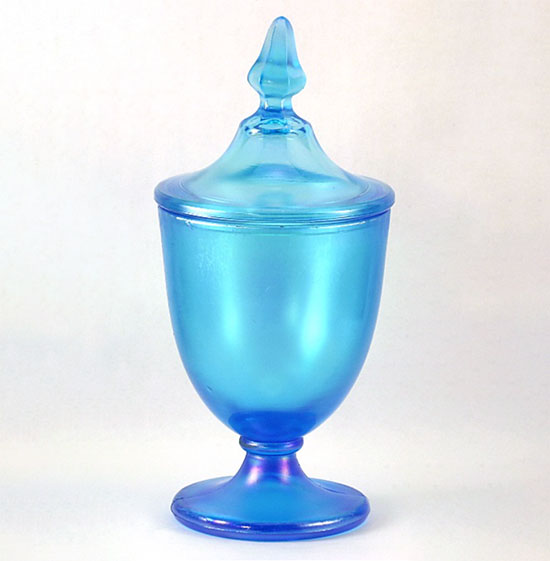
When I obtained this candy jar, I thought that it was Aquamarine, but when I got it home, it didn’t come close to the true Aquamarine blue! Aquamarine has a very different blue tone as illustrated in this Fenton #1616 basket:
Fenton also made a limited amount of Royal Blue stretch which was their name for a dark cobalt glass. This is pretty difficult to find in stretch and the rich color commands good prices. Here’s a small #640 bowl in this amazing color.
Northwood used three blue colors in their stretch lines. They made a light blue color that seems to have a fair amount of green in it.
Their most common blue is a true Celeste Blue type which they simply called “Blue” in their Rainbow Line. My example is the 10-inch, spiral optic bowl.
And, Northwood made a distinctive dark blue which collectors call “sapphire” today, but I suspect it was merely a darker “Blue” in their thinking. In any case, there is a good amount of this darker blue available and it is definitely liked by collectors. My example is the 8-inch #301 bowl with the narrow optic panels.
Oh, I forgot that Northwood actually made a fourth blue color, but this is an opaque glass, their Jade Blue as illustrated using the #643 covered bonbon.
Central Glass also made stretch in two blue colors, a Celeste Blue type (which seems to have a little green in it) and a cobalt blue.

Diamond made a true Celeste Blue color (I’ll use a #900, “Adam’s Rib” comport), and they also made a cobalt blue glass (I’ll use a ground marie plate).
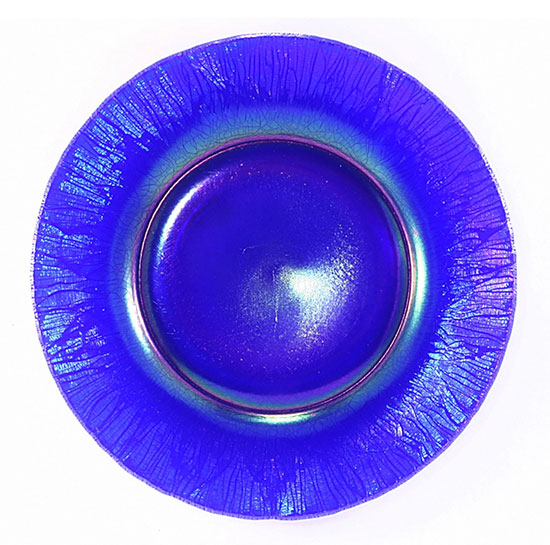
However, my favorite Diamond blue is their “Blue Crackle” in which the cobalt blue glass was crackled (plunged into water to fracture the glass, then reheated to fuse it), then it was given the stretch iridescent finish!
Imperial didn’t make what I would call a true blue glass! They made stretch in their “Green Ice” color with most folks call teal though some call it “Reef Aqua.” It has a lot of green with the blue. I’m going to illustrate this with a #320 (“double scroll”) bowl.
U.S. Glass made a considerable amount of blue glass in various shades. They made pieces in a nice Celeste Blue shade (not shown), but they also made a light, almost aquamarine color: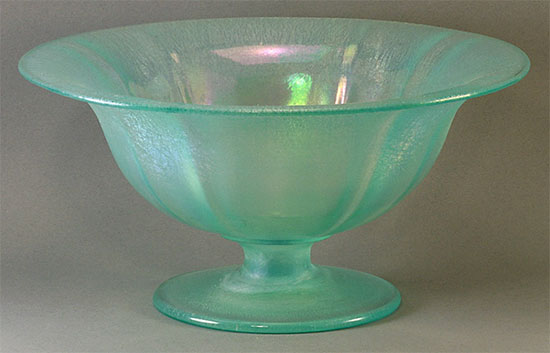
They also made a light cobalt color.
And an opaque, slag-like blue which was called Pearl Blue.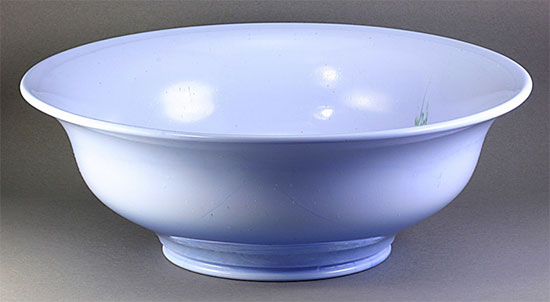
Finally, we have Vineland. This company made “Tut Blue” which was their version of a Celeste Blue type. Vineland seemed to have poor quality control and this Tut Blue can vary considerably.
A few Vineland bowls have also shown up in a light cobalt blue color.
And, one Vineland bowl has been found in a dark cobalt blue color! Wow!
